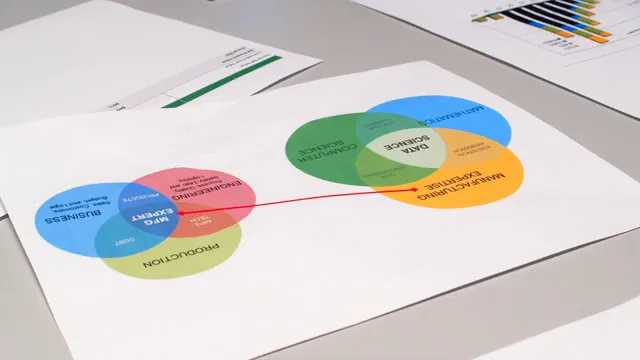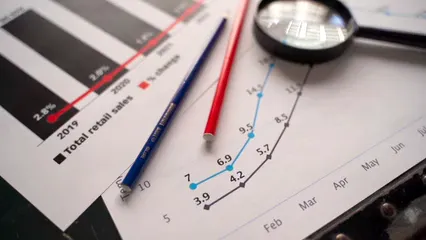Introduction
Have you ever wondered why reports matter? They play a crucial role in many fields. From business to journalism and academia, reports help us share important information. Effective communication through reports ensures that data is understood and actionable. This article aims to clarify what reports are, the different types available, and best practices for crafting effective reports.
Understanding the structure and content of reports can be enhanced by exploring an introduction to statistical learning with python book length.
Summary and Overview
A report is a structured document that presents information clearly. Its primary purpose is to relay findings or observations. In business, journalism, and academia, reports are vital. They guide decision-making and provide insights. Typically, reports follow a common structure, aiding readers in understanding complex subjects. Clear communication and effective data presentation are essential aspects of any report.
Before you start writing, equip yourself with a Report Writing Guide Book. This can help you navigate the nuances of crafting a report that stands out. After all, a well-structured report can be the difference between a promotion and a polite “thanks, but no thanks.”

Types of Reports
Annual Reports
Annual reports provide a comprehensive overview of a company’s yearly performance. They usually include financial statements, management discussions, and future outlooks. Transparency and accountability are crucial in these reports, as they inform stakeholders about the organization’s health.
Progress Reports
Progress reports update stakeholders on ongoing projects. They highlight milestones achieved, challenges faced, and outline next steps. Effective progress reports often lead to improved project completion rates, ensuring everyone is aligned and informed.
Research Reports
Research reports detail research findings and methodologies. They present results and discuss their implications. With a focus on citation and impact factors, these reports contribute significantly to academic knowledge and credibility.
Incident Reports
Incident reports document specific events or occurrences. They detail what happened, who was involved, and actions taken. These reports enhance organizational safety by providing a clear account of incidents.
Technical Reports
Technical reports analyze technical issues or innovations in-depth. They cover specifications, testing results, and provide recommendations. These reports have evolved significantly, impacting various industries and their reporting standards.

By understanding these report types, you can appreciate their importance in effective communication and decision-making across different sectors. And if you’re looking to streamline your reporting process, consider grabbing a Business Report Template Book. It might just save you hours of formatting and design work!
Incident Reports
Incident reports are vital documents that record specific events or occurrences. These reports serve as a record of what happened, who was involved, and the actions taken afterward. They play a crucial role in promoting safety within organizations. By analyzing these reports, businesses can identify patterns and prevent future incidents. Research shows that organizations utilizing incident reports experience a significant reduction in workplace accidents. This emphasizes the importance of thorough documentation for creating safer environments.
Technical Reports
Technical reports provide an in-depth analysis of technical issues or innovations. They typically include detailed technical specifications, testing results, and recommendations for improvements. These reports have evolved over the years, becoming more structured and comprehensive. Industries now rely heavily on technical reporting to make informed decisions. For instance, a survey indicated that 75% of engineers consider technical reports essential for project success. This highlights their importance in driving innovation and ensuring quality in various sectors.

Structure of a Report
Title Page
The title page is crucial for any report. It provides a clear and informative title that sets the tone for the content. Essential elements include the company name, report title, and date of publication. A well-crafted title page ensures that readers immediately grasp the report’s focus and purpose.
Executive Summary
The executive summary offers a concise overview of the report’s content. It highlights key findings, recommendations, and conclusions. This section is critical, as it can significantly influence decision-makers. Studies show that a well-written executive summary can improve engagement by up to 40%. This makes it a vital component for readers who may not have time to review the entire report.

Table of Contents
An organized table of contents is necessary for easy navigation. It includes section headings and corresponding page numbers, allowing readers to locate information quickly. A clear table of contents enhances the report’s usability, making it more accessible for different audiences. This structure is especially beneficial in lengthy documents, helping to maintain reader interest and comprehension.
Introduction
Reports are essential in various fields. They provide structured information that guides decisions. Understanding the purpose and scope of a report helps clarify its significance. Typically, reports aim to inform and analyze specific topics. Background information sets the context for the report’s content. This context ensures readers grasp the relevance of the findings.

Body (Discussion Section)
When structuring a report, organization is key. Using clear headings helps guide the reader through the content. Headings break up text and highlight essential sections. Bullet points can present information concisely, making it easier to digest. Visuals like charts and graphs enhance understanding, especially for complex data. They illustrate trends and highlight key points effectively. Combining these elements creates a more engaging and informative report.
Conclusion
In summary, reports uncover valuable insights and recommendations. They serve as vital tools for decision-making and future actions. By summarizing findings clearly, reports foster informed choices. It’s crucial to act on the recommendations provided to maximize impact.

References and Appendices
Proper citation is essential in reports. It lends credibility to the information presented. Including a reference section allows readers to explore sources further. Additionally, appendices can provide supplementary materials for deeper understanding. These elements enhance the report’s effectiveness and reliability.
Use of Visuals
Visuals are powerful tools in reports. They can significantly boost understanding and retention of information. For instance, graphs and charts can turn complex data into simple visuals. This makes it easier to grasp trends or comparisons at a glance. Images can enhance emotional connection and clarify concepts. Including visuals helps to break up text, keeping readers engaged. Remember, a picture can say a thousand words!

Audience Awareness
Tailoring your report to your audience is essential. Consider their knowledge level and interests. Using appropriate language is key to effective communication. Avoid jargon if your audience isn’t familiar with it. Depth of detail matters too. A more technical audience might appreciate in-depth analysis, while a general audience may prefer a simplified version. Knowing your readers helps ensure your message lands effectively.
Review and Editing
Proofreading and revising are crucial steps in report writing. They help catch errors and improve clarity. Seeking feedback from colleagues can provide fresh perspectives. It’s often hard to spot our own mistakes, so a second pair of eyes is invaluable. Remember to check for grammar, spelling, and factual accuracy. A polished report reflects professionalism and can enhance credibility.

Conclusion
In conclusion, reports are vital for effective communication. They inform decisions and provide clarity on complex issues. A well-structured and informative report can significantly influence outcomes. By applying best practices, you can elevate your reporting efforts. So, take these tips to heart and watch your reports make a greater impact!
What are some common types of reports?
Reports come in various forms, each serving a specific purpose. Here are some common types:
1. Annual Reports
These reports summarize a company’s yearly performance. They usually contain financial statements, management discussions, and future forecasts. Annual reports promote transparency and keep stakeholders informed.
2. Progress Reports
Progress reports provide updates on ongoing projects. They detail milestones achieved, challenges encountered, and next steps. These reports help keep teams aligned and informed about project status.

3. Research Reports
Research reports document findings from studies. They include methodologies, results, and implications. These reports enhance academic credibility and contribute to the body of knowledge in various fields.
4. Incident Reports
Incident reports capture specific events or occurrences. They describe what happened, who was involved, and actions taken afterward. These documents play a critical role in improving organizational safety.
5. Technical Reports
Technical reports offer in-depth analyses of technical issues or innovations. They present specifications, testing results, and recommendations. These reports are essential in industries like engineering and technology.
6. Business Reports
Business reports assess performance and provide insights on operations. They help management understand company health and guide strategic decisions.

Each report type serves a unique purpose in effective communication and decision-making. And if you want to make your reports visually appealing, consider using a Graph Paper Notebook. It’s perfect for sketching out ideas or creating diagrams that will make your reports pop!
Why are visuals important in reports?
Visuals play a crucial role in enhancing reports. They can significantly improve comprehension and engagement. Here’s how:
1. Simplifying Complex Information
Graphs and charts can distill complex data into easy-to-understand visuals. This allows readers to grasp trends and comparisons quickly. Visual aids can replace lengthy text passages, making reports more digestible.

2. Enhancing Retention
Studies show that people remember information better when it’s presented visually. Images and infographics can reinforce key messages, improving retention rates. This leads to a more informed audience.
3. Capturing Attention
Visual elements make reports more engaging. They break up blocks of text, preventing reader fatigue. Eye-catching graphics can draw attention to important points, keeping readers interested.

4. Supporting Arguments
Visuals can substantiate claims made in a report. Data visualizations, like pie charts or bar graphs, provide evidence that strengthens arguments. This adds credibility and clarity to your findings.
Incorporating visuals makes reports not only more attractive but also more effective in communicating important information. To make sure your visuals stand out, consider investing in a Highlighters Set. Trust me, nothing screams “take me seriously” like a well-highlighted report!

What are the best practices for writing a report?
Crafting an effective report requires attention to detail and clarity. Here are some best practices:
1. Start with a Clear Structure
Organizing your report with headings and subheadings makes it reader-friendly. Use bullet points for lists to enhance readability. A clear structure helps guide readers through your content.
2. Be Concise and Clear
Use simple language and avoid jargon. Short sentences improve clarity and keep readers engaged. Aim to convey your message without unnecessary complexity.

3. Tailor to Your Audience
Consider who will read your report. Adjust the language, depth, and content to suit their needs. Understanding your audience helps ensure your message resonates.
4. Use Visuals Effectively
Integrate charts, graphs, and images to support your points. Ensure visuals are relevant and enhance comprehension. A well-placed visual can make a lasting impact.
5. Review and Revise
Edit your report to eliminate errors and improve flow. Seek feedback from peers to gain fresh perspectives. A polished report reflects professionalism.

Implementing these best practices will enhance the quality and effectiveness of your reports. But remember, no report is complete without the right tools. Check out a USB Flash Drive for Data Storage to keep all your important documents in one place!
Please let us know what you think about our content by leaving a comment down below!
Thank you for reading till here 🙂
All images from Pexels




